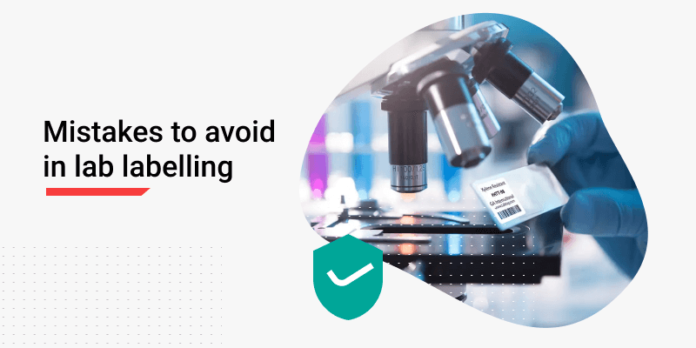Lab labelling is an easy task to undertake. You have to get the specimen information on the label, place the label on the sample and have your work done. Your laboratory label is an essential aspect of your lab success story. These labels hold critical information, and without it, your samples will be irrelevant.
Labels are sources of your identification. If you use them, you will set a strong foundation for your internal sample management process.
If you use large-scale identification automation, make simple steps to improve existing processes. You will optimize the efficiency and results of the labelling process.
Try to remove all the common error items. The end quality spectrum is to squeeze out all possible errors in the entire process. Here are the common mistakes that relate to labelling that most labs make.
Handwriting labels
It’s evident that many labs still handwrite their labels. The easy thing with handwriting is that anyone can pick a pen and write the label. The handwritten labels are unreliable and difficult to read, and the pen ink can smear. It’s thus possible to misread information raising repetitive errors.
It’s not easy to start printing labels at the primary level. You can begin by buying a small, user-friendly keyboard and a printer. You can also implement a computer labelling system. It will take a simple spreadsheet and merge it with label files to print out the data.
Printed labels provide many vital advantages over handwriting. A printed label is reliable with clear text that everyone can read. There are no transcription errors. It reduces the time to rewrite or interpret correct information.
Buying wrong labels for use
The labels software is getting complicated every day. There are many label options to choose to make it hard for laboratories to know the correct label for use. If you select a nonspecific label, then you will have problems.
To choose a correct label, check the environment and the steps of your lab based on what you want to achieve. Review trusted companies that produce labels and test to see if they fit in your environment.
The label producers also give technical data that has the parameters and protocols. These are different for each label type.
Building waste in the labelling process
Building waste involves creating waste by piling up work. You build a backlog that technicians can’t handle. In a lab, these are the types of backlogs:
- Inventory
- Transportation
- Waiting
- Motion
- Over-processing
- Defective product
- Overproduction.
You need to implement an on-demand printing solution to reduce such backlogged cases.
Forgetting the bar code on your level
Barcodes give tremendous improvement avenues for lab identification. They reduce errors and technical productivity levels. The traditional labelling methods of tracking and handwriting are manual. They are full of mistakes. Labs that use barcodes will reduce error numbers.
Label only for you your lab
Each lab has its way of identifying samples. You need to choose the type of information that appears on the label based on the company’s current needs. The lab industry is in continuous growth. It would help if you improve your collaboration and sharing. You need to read and understand your labels. The people who are outside the lab should also be able to read your labels.
Conclusion
Many industry-wide best practices are in place to offer guidance on labelling requirements. Customize the guidelines to fit in your lab and get the baseline data to include in your labels.
Adhering to the guidelines, you will create a good platform for sample identification.








